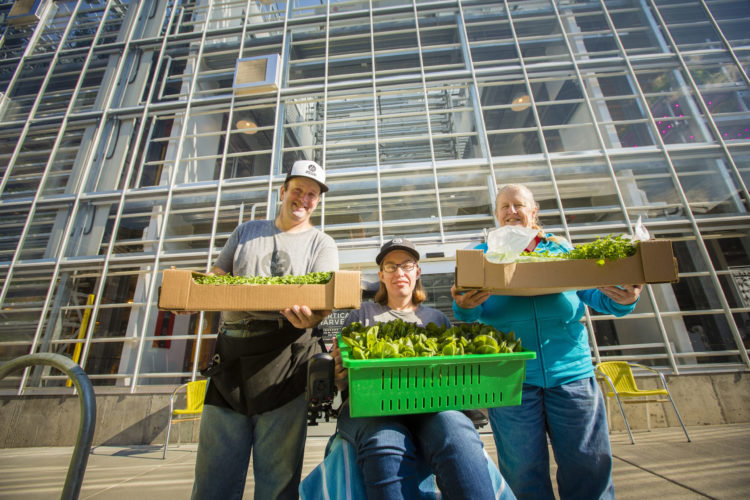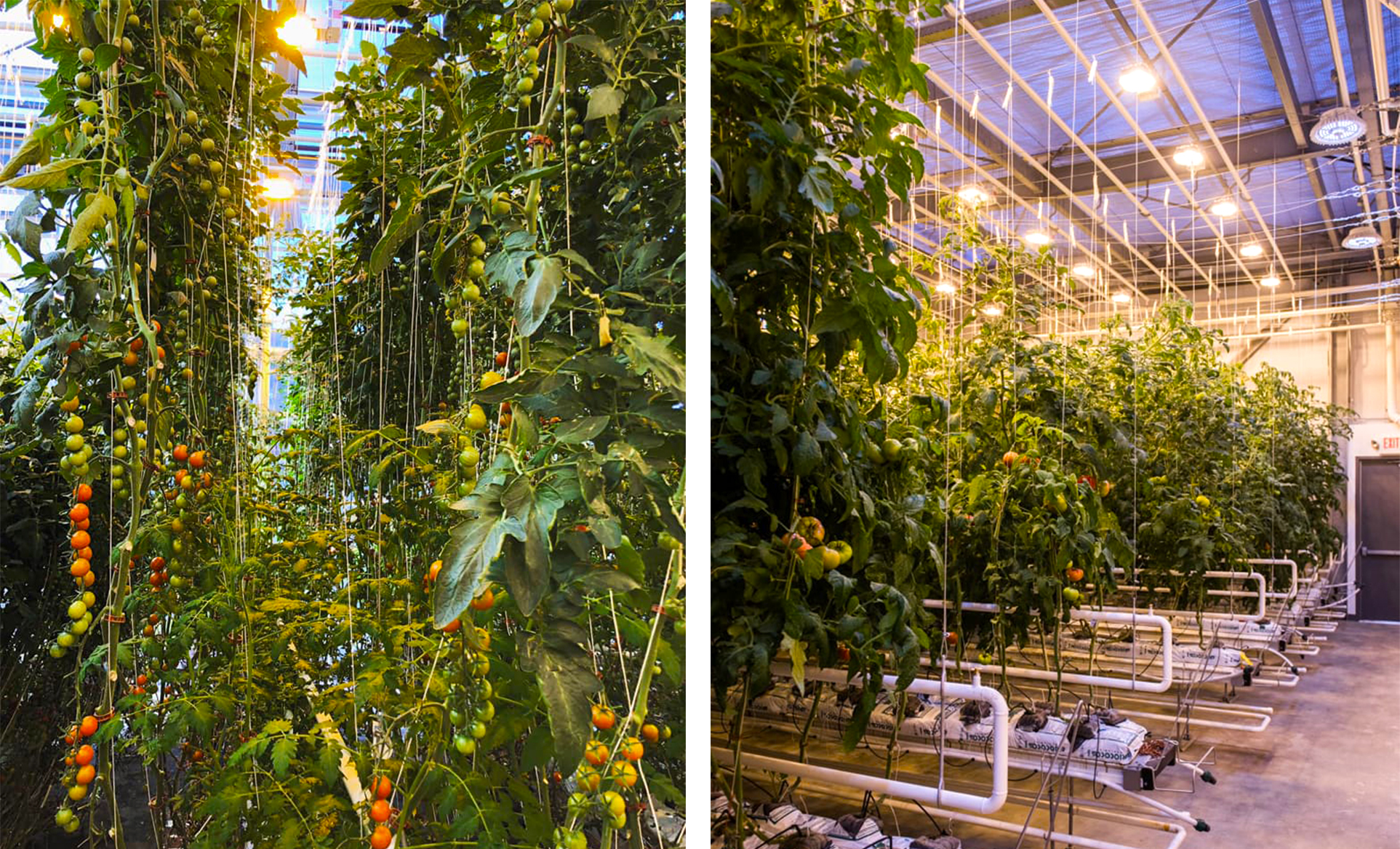Vertical Harvest
Located in in downtown Jackson Hole, Wyoming, Vertical Harvest is a ground-breaking, three-story hydroponic greenhouse—built onto the side of an urban parking garage.


Located in in downtown Jackson Hole, Wyoming, Vertical Harvest is a ground-breaking, three-story hydroponic greenhouse—built onto the side of an urban parking garage.

Location: Jackson Hole, Wyoming
Crop: Leafy Greens and Tomatoes
Luminaire: HSE 600
The future of sustainable, urban agriculture.
Located in in downtown Jackson Hole, Wyoming , Vertical Harvest is a ground-breaking, three-story hydroponic greenhouse—built onto the side of an urban parking garage.
The project started out with the simple goal of growing fresh produce year-round and providing employment opportunities for people with developmental disabilities.
With property prices in Jackson amongst the most expensive in the country, one of the biggest challenges was to design a facility where they could grow as much food as possible, with the smallest possible footprint.
In collaboration with an experienced team of European greenhouse design engineers, they turned their humble vision into to an impressive $3.7 million glass structure that has been hailed as the future of sustainable, urban agriculture.
The building is designed to harvest the maximum amount of natural daylight and the exterior facade is specified to allow the highest light transmission possible. Additionally, an ingenious “carousel” system continuously rotates the plants to ensure that each plant has equal exposure to the warmer and sunnier south-side of the building. Although this sustainable approach results in a significant reduction in energy consumption and improved photosynthetic responses by the plants for much of the year, the geographic location of Jackson Hole means that there are periods of the year where natural daylight levels are insufficient for growing certain crops like tomatoes. For this reason, a supplementary lighting system needed to be integrated into the design, in order to achieve year-round production goals.

The three-tier design, allows for three distinct microclimates within a single structure. The ground floor is the coolest, and the space is used primarily to host educational programs and a year-round “farmers’ market”. The second floor is slightly warmer, and is dedicated to the cultivation of leafy greens and the propagation of seedlings. Thanks to the glass roof, the third floor boasts the highest light levels and warmest temperatures—providing an ideal environment for growing tomatoes.

Different crops require different light intensities and spectrums for optimum growth. Since the lettuce, microgreens and propagation areas require lower light levels and cooler temperatures, LED lighting made sense for the first two floors. The tomatoes on the third floor, however, require higher light intensities and excellent uniformity. For this reason, 600W high-pressure sodium (HPS) luminaires from P.L. Light Systems were installed throughout the third floor. These HPS grow lights are expected to be utilized approximately 3,000 hours/year in order for Vertical Harvest to provide fresh produce year round.

Vertical Harvest uses a hydroponic growing system—a soilless growing method in which plant roots are bathed in nutrient-rich, highly-oxygenated water that sees growth rates far above those of soil-grown plants. Vertical hydroponic farms like Vertical Harvest conserve land, reduce food miles and use 90% less water than traditional outdoor methods—with no pesticides, herbicides or fertilizers. Vertical Harvest is designed for maximum production efficiencies—converting 4,500 sq. ft. of real estate into an 18,000 sq. ft. growing area.
Healthy food means a healthy community, and they partner with local organizations and schools to address health, nutrition, and disease-prevention in the community. As for what’s next – the sky is the limit. They hope that the success of the Vertical Harvest project will inspire other communities to invest in transformational, sustainable food production. For more information visit their website at https://www.verticalharvestjackson.com/